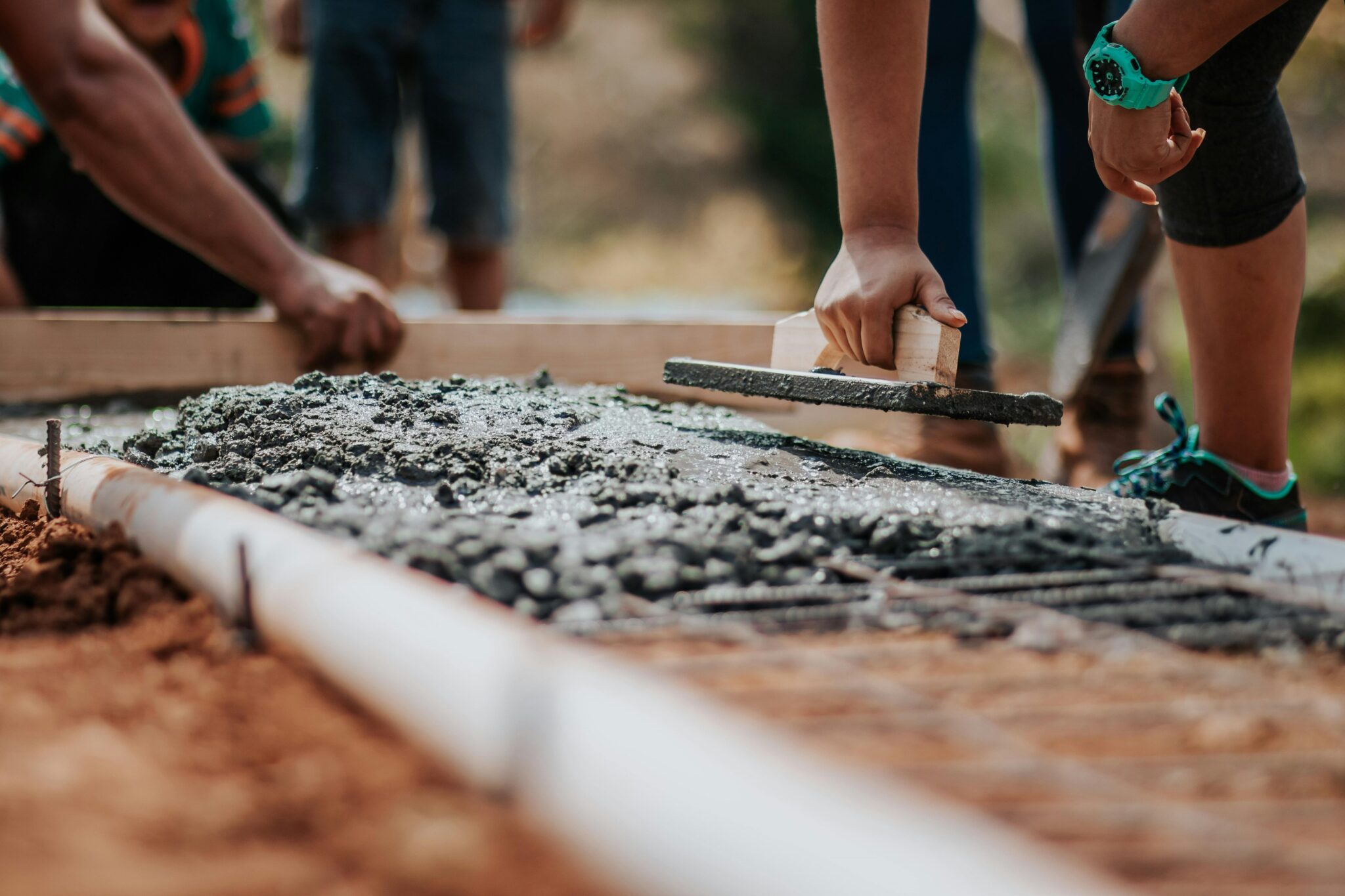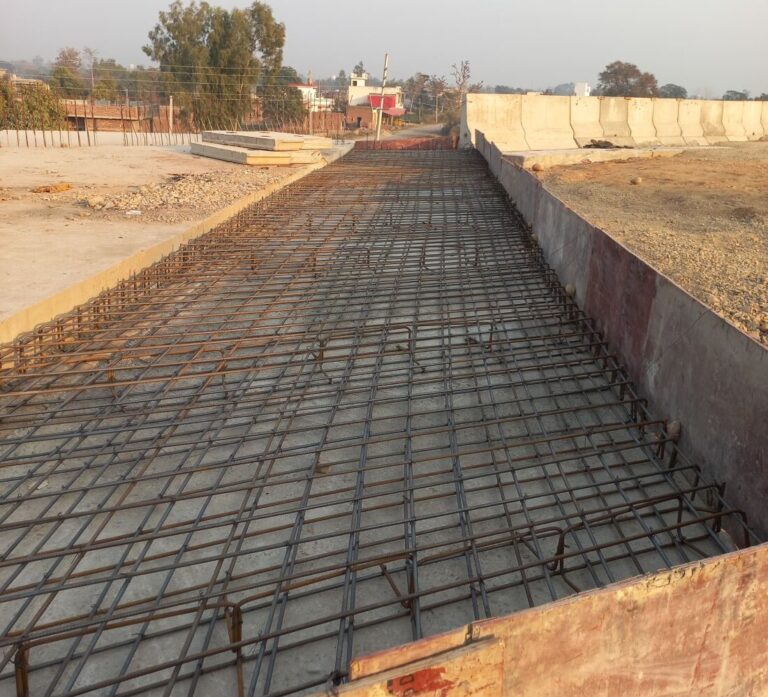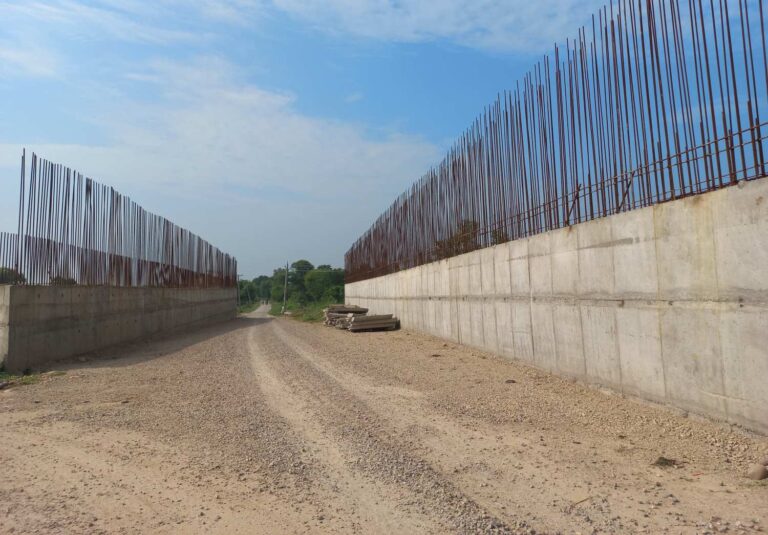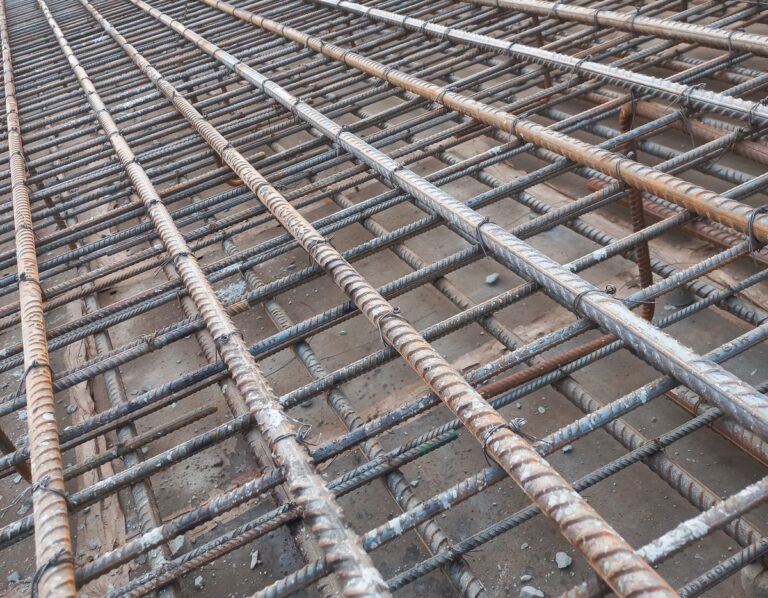PCC & RCC are distinct types of concrete mixtures used in construction, each with specific uses and properties. Both utilize cement, aggregates, and water, and require proper mixing and curing for maximum strength. However, PCC lacks reinforcement and is used for non-structural purposes like flooring and pavements, while RCC includes steel reinforcement, making it suitable for structural elements like beams and columns. PCC does not contain steel, whereas RCC contains steel. Understanding these differences helps in selecting the right type of concrete for various construction needs, ensuring both safety and durability.
what is PCC ?
PCC is also known as Plain Cement Concrete. It is made up of cement, sand, water, and aggregates. It is useful for flooring, base surfaces, and ground-level base structures. PCC is used at the ground level or as a base before constructing any structure because the ratio of aggregates to cement is lower, making it water-absorbing. This helps protect the structure from water rising from the ground. it doesn’t contain steel, PCC is generally not designed for heavy loads and is weaker and of lower quality compared to RCC concrete.
what is RCC ?
Reinforced Cement Concrete (RCC) is the best and strongest concrete mixture. It contains steel, which significantly enhances its strength. RCC is used for raft slabs, walls, and structures that need to bear heavy loads because this concrete is capable of handling substantial weight. Generally, it is made up of sand, water, cement, aggregates, and chemicals.
PCC & RCC: Differences
| Feature | PCC (Plain Cement Concrete) | RCC (Reinforced Cement Concrete) |
|---|---|---|
| Composition | Cement, sand, water, and aggregates | Cement, sand, water, aggregates, and steel |
| Use | Flooring, base surfaces, and ground-level base structures | Raft slabs, walls, and heavy load-bearing structures |
| Reinforcement | No reinforcement | Contains steel reinforcement |
| Strength | Weaker and of lower quality | Strong and capable of handling heavy loads |
| Water Absorption | Absorbs water, protecting the structure from ground moisture | Not specifically designed for water absorption |
| Aggregate Ratio | Lower ratio of aggregates to cement | Standard ratio including steel reinforcement |
| Typical Applications | Non-structural uses | Structural uses requiring high strength |
PCC & RCC: Common Factors
| Factor | PCC (Plain Cement Concrete) | RCC (Reinforced Cement Concrete) |
|---|---|---|
| Cement | Used as a primary binding material | Used as a primary binding material |
| Sand | Included in the mixture | Included in the mixture |
| Water | Essential component | Essential component |
| Aggregates | Present in the mixture | Present in the mixture |
| Mixing Process | Requires proper mixing | Requires proper mixing |
| Curing | Needs proper curing to achieve strength | Needs proper curing to achieve strength |
Conclusion
Understanding the differences and common factors between PCC & RCC is crucial for selecting the appropriate type of concrete for construction projects. PCC is ideal for non-structural uses where water absorption is needed, while RCC is essential for structural elements requiring high strength and load-bearing capacity. Both types of concrete play vital roles in ensuring the durability and safety of various structures.
What is the main difference between PCC and RCC?
The main difference is that PCC (Plain Cement Concrete) lacks reinforcement and is used for non-structural purposes, while RCC (Reinforced Cement Concrete) includes steel reinforcement, making it suitable for structural elements requiring high strength.
Can PCC be used for structural elements?
No, PCC is not designed for structural elements. It is primarily used for flooring, base surfaces, and ground-level base structures. RCC, with its steel reinforcement, is better suited for structural elements like beams, columns, and slabs.
Why is reinforcement added to RCC?
Reinforcement, typically in the form of steel bars or mesh, is added to RCC to significantly enhance its tensile strength. This allows RCC to handle heavy loads and various stresses, making it ideal for structural applications.









[…] strength and durability. This construction method involves embedding steel bars, known as reinforcement, within the concrete. The combination of concrete’s high compressive strength and […]
[…] admixtures, such as accelerators, can increase the early strength of concrete, allowing for faster construction times and earlier removal of […]